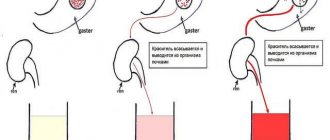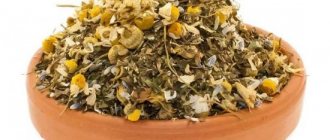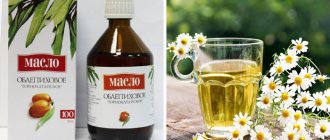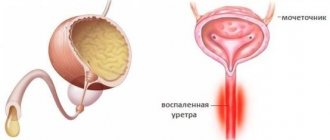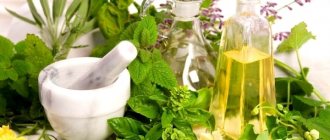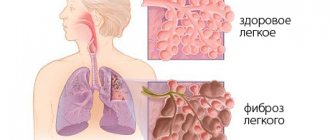Signs of high acidity
The following symptoms may suggest increased stomach acidity:
- pain in the upper abdomen after eating certain foods - spicy, sour, fatty, fried, marinades and canned food, citrus fruits, sour apples and berries;
- heartburn - a burning sensation in the epigastric region;
- belching, often with sour stomach contents;
- tendency to constipation, bloating;
- increased appetite, the need for frequent meals when the stomach “sucks”;
- asthenic phenomena - nervousness combined with lethargy, mood swings, poor sleep;
- increase in body temperature to subfebrile levels - with the development of acute inflammation of the stomach.
Also a common symptom are “hunger” pains combined with heartburn, which subside after eating, often after drinking milk. Such a sign may indicate the formation of erosions and ulcers on the mucous membrane. Often, at the first manifestations of digestive problems, patients try to treat themselves with various folk and home remedies on the advice of “experienced” people.
No one denies the healing properties of natural folk recipes, but first you need to be examined by a gastroenterologist, and use them only as part of the main treatment course. Next, we will talk about how and how you can reduce high stomach acidity using various folk remedies.
Diet for high stomach acidity
Both traditional medicine and folk remedies recommend adhering to a strict diet. From the moment treatment begins, a person must clearly control what goes into the stomach, remember the body’s reaction after eating something, and monitor for signs of pathology.
You should avoid anything that somehow irritates the mucous membrane or provokes an increase in acidity:
- fat;
- fried;
- sour, salty, marinades;
- coffee, strong black tea, carbonated drinks;
- sweets;
- sauces;
- hot spices;
- fresh bread;
- alcohol.
The ban on high acidity also applies to all products containing synthetic flavor enhancers. You should also give up smoking, especially on an empty stomach. You should be more careful when taking painkillers.
Principles of nutrition in the treatment of high stomach acidity
The diet involves not only excluding from the diet a number of foods that are prohibited in case of high acidity, but also changing the usual food culture. In treatment, it is necessary to establish a certain regimen and stick to it for as long as possible. This applies to:
1. Food temperatures. Too cold or hot it causes thermal irritation of the mucous membrane and provokes increased acidity.
The optimal indicator for food and drink is within 25-55 degrees. Otherwise, the treatment process will be delayed or all efforts will be in vain.
2. Breakfast essentials. Many people refuse the first meal, citing heaviness in the stomach and lack of appetite. This is the wrong approach to treating hyperacidity. Nutritionists recommend starting the day with something that will have an enveloping effect on the mucous membrane, protecting its walls from further irritation throughout the day. These are mashed potatoes, a raw or soft-boiled chicken egg, a piece of day-old bread with butter.
3. Diet and taking medications, tablets for symptoms of high acidity. It is advisable to eat according to a schedule, every 2 hours, in fractions. The medications are designed to prepare the body for food intake by regulating the increase in acidity levels.
4. Parallel treatment of all other gastrointestinal diseases.
5. Overeating - portions should be about a handful. Otherwise, you can provoke heartburn.
During treatment, the diet of a person with high stomach acidity should consist of vegetables, fruits (baked for children), and cereals. They buy low-fat meat and fish. Particular attention is paid to fermented milk products - non-sour cottage cheese, kefir, hard cheese. They will replenish the calcium level in the body and will not provoke unpleasant symptoms.
Gastroenterologists advise eating soups with high acidity pureed, like other foods. Large, coarse pieces should not enter the stomach. Chew food slowly, thoroughly, for a long time. This will simplify the task for the body and help it better absorb beneficial substances. Fruits and vegetables are eaten both raw and after heat treatment. It is best to bake them or cook them in a double boiler.
Treatment with folk remedies for high acidity
Folk remedies are successfully combined with traditional treatment of high acidity with tablets. In addition to a strict diet, they recommend:
- drinking fresh potato juice on an empty stomach (0.5 cups) - this will prevent heartburn and reduce high acidity;
- drinking aloe juice with honey 1-2 tablespoons during the day will eliminate the mechanism of increasing acidity levels, ease symptoms, and speed up the course of treatment;
- fresh cabbage juice - at lunchtime and in the evening;
- Brewing herbal teas, special mixtures (calendula, St. John's wort, yarrow) is an obligatory component of treatment with traditional methods, especially for children.
How to reduce stomach acidity with bee products?
Bee honey
For many centuries, honey and other bee products have held primacy among all other traditional medicines. They are widely used in the treatment of almost all diseases of the digestive tract due to their unique composition, which includes more than 300 useful substances. These include all vitamins and microelements, enzymes, amino acids, carbohydrates, fats, biologically active substances - flavonoids, alkaloids, antimicrobial substances - phytoncides, plant hormones.
Honey is used for both low and high stomach acidity. It is able to restore glandular epithelial cells that produce acid, and at the same time reduce its concentration. It all depends on the time of its use in relation to the time of eating.
When acid-forming function is increased, it is important to take honey 1.5-2 hours before meals. Dilute 1-2 tablespoons in a glass of warm water, drink the honey drink 4 times a day for 2-3 months. After six months, the treatment is repeated. Preventive medical treatment is optimal on the eve of seasonal exacerbations of gastric diseases - in spring and autumn, but can also be used during the acute period.
Honey is contraindicated for diabetes, intolerance to bee products, and for children under 4 years of age.
Propolis
The resinous substance propolis or bee glue is not inferior to honey in the amount of biologically active substances, and even exceeds it in the content of flavonoids, enzymes, polyphenols, amino acids and phytoncides.
There are many recipes with propolis for the stomach, but it is with high acidity that it is recommended with butter or milk. The oil is made by mixing 180 g of butter with 20 g of propolis and keeping it in a water bath for half an hour. Then filter, take a teaspoon 1.5 hours before meals, washed down with warm water.
The milk mixture is prepared as follows: add 50 g of propolis to 1 liter of milk, bring to a boil, then reduce the heat and leave for 10 minutes. Take half a glass half an hour before meals.
Flower pollen and beebread
Both products are healing in the treatment of gastritis, peptic ulcer with high acidity. The concentration of biologically active substances in them is higher than in honey. Bee bread is bee pollen, that is, flower pollen, already saturated with the waste products of bees.
They are identical in activity, but beebread contains more enzymes and is better absorbed by the body. The use of the product is simple: pour a tablespoon of pollen into a glass of warm water, stir, cover and leave to brew for 3 hours. Take warm, one tablespoon 1.5 hours before each meal.
How to reduce stomach acidity at home
Hyperacidity of the stomach is the excessive production of hydrochloric acid, accompanied by painful symptoms in the upper abdomen and disruption of the entire digestive system. One of the causes of pathology is exposure to Helicobacter pylori bacteria, which enter the stomach along with dirty hands or poorly processed food. Medicines, folk remedies, mineral water and some food products are used as therapy.
Why does acidity increase?
With increased stomach acidity, patients experience a low pH (acid-base balance), usually below 7 units. Therefore, patients are prescribed restorative therapy to normalize the pH balance. The reasons that provoke increased stomach acidity include the following factors:
- Poor nutrition - abuse of fatty, fried and spicy foods, smoked meats, spices, etc. Acidity can also increase if the diet is disrupted, if you eat a large amount of food before bed (as a habit), if you overeat at any time of the day, etc.
- Hormonal disorders - occur with a tumor of the pancreas (gastrinoma), with increased activity of stomach cells that produce gastrin (hormone), during menopause and during adolescence.
- Helicobacter pylori - enters the body directly from another person (usually through contact and household means - through hygiene items, shared utensils, door handles in a public toilet, etc.).
- Psycho-emotional disorders - frequent stress, irritability, neuroses, lack of sleep (including insomnia), etc.
- Pregnancy at any stage - in the first trimester, an increase in acidity is caused by toxicosis and hormonal imbalance, at a later stage - by an increase in the size of the uterus and, as a result, compression of the stomach.
- Bad habits - abuse of alcoholic and carbonated drinks, prolonged smoking.
An indirect factor influencing the increase in gastric acidity is considered to be long-term use of non-steroidal anti-inflammatory drugs and hormonal agents.
How to determine stomach acidity - main signs
Increased stomach acidity is characterized by the following symptoms:
- frequent heartburn (especially after eating);
- sour belching;
- bitter taste in the mouth (usually in the morning);
- periodic constipation;
- intestinal colic;
- unreasonable feeling of hunger (occurs even after eating food);
- the appearance of a white coating on the tongue (in the central part);
- nausea, sometimes accompanied by vomiting;
- aching or nagging pain in the epigastric region (usually occurs 2-3 hours after eating).
Herbal preparations to reduce stomach acidity
Among folk remedies for the treatment of high acidity of the stomach, various preparations are widely used, combining several components with different effects. Some of them help normalize gastric secretion, others reduce inflammation and pain, others normalize peristalsis, stimulate recovery processes, and protect the mucous membrane from the effects of acid. The mixtures are easy to prepare and can be purchased at the pharmacy.
Pharmacy fees
Pharmacies offer more than 30 types of multicomponent gastrointestinal preparations; to reduce acidity, gastric preparations No. 2 and No. 3 should be used.
Collection No. 2
The composition includes the following components:
- calamus root;
- motherwort grass;
- yarrow herb;
- dandelion root;
- trefoil leaves;
- centaury grass.
The collection has an analgesic, calming, anti-inflammatory, healing effect, eliminates spasms, heartburn, normalizes digestion and stool. Prepare according to the instructions on the package and take 50 ml before meals.
Collection No. 3
This fee includes:
- valerian root;
- nettle leaf;
- calamus root;
- peppermint leaf;
- buckthorn bark.
This composition helps relieve spasms, pain, inflammation, reduce acid production, and also has a mild laxative effect, so it is recommended for those with constipation. Prepare and take according to the instructions on the package.
Examples of folk herbal recipes
- St. John's wort, yarrow, peppermint.
- Calendula flowers, yarrow, cinquefoil.
- St. John's wort herb, marsh cudweed, valerian root, tansy flowers.
- Yarrow, dill seeds, linden blossom.
Collections can be prepared in the form of infusions, decoctions or tinctures.
Infusions
To prepare infusions, infusions are used that contain crushed soft components of the plant - grass, leaves, flowers. The mixture is poured with boiling water at the rate of 1-2 tablespoons per glass of water, covered and left for 1-3 hours, then filtered and taken in the amount recommended by the doctor before meals.
Decoctions
Decoctions differ in that they are prepared by boiling the ingredients. This is how collections are usually prepared, which include solid components - bark, roots. The required amount of the collection is poured with water at room temperature in a ratio of 1:10, brought to a boil and left on low heat for 30-40 minutes. Allow to cool, filter and also take before meals as recommended by your doctor.
Symptoms and causes of low acidity
Hydrochloric acid in the stomach performs many functions, the most important of which, of course, is participation in the breakdown of nutrients coming from outside. In addition, it actively destroys pathogenic microflora. Therefore, when gastric acidity is within the age norm, the human body is well protected.
A significant decrease in pH is observed during exacerbation of many pathologies of gastrointestinal tract structures, for example, gastritis, pancreatitis. Other causes of this disorder may be:
- uncorrected diet;
- abuse of tobacco and alcohol products;
- taking certain subgroups of medications;
- severe stressful situations.
Symptoms that the juice in the digestive structures is not produced in the proper amount are:
- change in appetite – its significant decrease;
- the presence of an unpleasant aftertaste, belching after eating;
- disturbances in bowel movements - the presence of pieces of undigested food in the stool;
- constant bloating;
- repulsive, putrid odor from the mouth;
- discomfort and heaviness in the epigastric region.
The specialist decides what to do and how to improve the production of hydrochloric acid after a thorough diagnosis and clarification of the reasons why a malfunction has formed in the digestive structures.
Useful video
Effective recipes are given in this video.
Tinctures
Tinctures are prepared from any type of raw material - flowers, leaves, roots, bark, natural resins, pouring them with 96° medical alcohol, or diluted in half with water, or vodka. The proportions of the components are different. For example, fill a jar tightly with flowers or grass, and add alcohol to the brim. If, for example, propolis, mumiyo, bark are used, then the ratio of components to alcohol is 1:5 - 1:10. After pouring, the mixture is tightly closed and left in a dark place for 1-3 weeks, depending on the ingredients.
The advantage of tinctures is that the raw materials are not subjected to heat treatment, all vitamins and nutrients and essential oils are preserved. They are used in a certain dose - measure the amount in drops or with a spoon, dilute with water, milk, and also take before meals.
The disadvantage of alcohol tinctures is irritation of the gastric mucosa, so they are not used during an exacerbation. Also, women should not take alcohol-containing products during pregnancy and breastfeeding.
Complex treatment
Therapy for increased acidity of the digestive organ is aimed at eliminating the symptoms of the disease and preventing other gastrointestinal diseases. For medicinal purposes they use: dietary nutrition, medicines and traditional medicine methods.
If the pain in the digestive organ is isolated, then you need to give up the food that caused the illness. But, if they recur and intensify, then you need to see a doctor, undergo an examination and do ph-metry.
Therapeutic diet
Therapy for high acidity of the digestive organ involves following a therapeutic diet. The diet will help stabilize the production of gastric juice and improve the patient’s well-being.
Products that promote the production of gastric juice should be completely excluded from the diet: rich broths, spices and other spices, fatty, hot, sour, smoked, flour products and dishes, raw lemons, oranges, radishes, onions, sorrel, cabbage, garlic, soda, alcohol, strong tea.
Principles of therapeutic nutrition:
- During periods of exacerbation of signs of increased acidity, it is better to consume food not in solid form, but in a mushy consistency;
- You can eat various porridges (semolina, oatmeal, buckwheat, rice) with water and low-fat milk with a small amount of sugar and butter.
- Soups should be cooked with 2nd broth.
- You need to eat lean meat and fish (veal, chicken, hake, pollock).
- Preferred vegetables: carrots, potatoes, cauliflower.
- Eat eggs, cottage cheese, milk in moderation.
- You can drink warm weak tea, natural coffee, jelly and compotes with dried fruits.
- Products should only be consumed warm.
- Food should not be fried, it should be boiled, baked, stewed or steamed.
- To avoid increased stress on the digestive organ and balance the secretion of gastric juice, you need to eat small portions, but often (six times a day).
Other traditional medicines
In addition to herbs that reduce stomach acidity, traditional medicine also recommends other natural remedies:
- eggshells - 1 teaspoon of crushed eggshells, taken 2 times a day before meals, washed down with water;
- cinnamon - half a teaspoon of powder is diluted in 0.5 glass of warm water, taken in the morning and evening before meals;
- plum - daily you need to eat 200 g of fresh fruit or drink the same amount of freshly squeezed juice;
- mumiyo (mountain wax) - dilute 1 g and a half glass of warm milk, drink three times a day 1-1.5 hours before meals.
These are just a few examples of the most popular folk remedies for high acidity, and, judging by patient reviews, they “work.” The main thing is to make the best choice and use it not as an independent method, but in combination with diet and drug therapy.
Traditional medicine to help the patient
Treatment with folk remedies is relevant at the initial stage of disease development. This approach is used in combination with drug therapy.
Food Based Recipes
For ease of perception of information, we list popular remedies for low acidity in the table below:
| Means | Preparation | Reception |
| Porridge of cabbage leaves and sour berries | - grind 2 kg of leaves and 500 g of red currant using a meat grinder - place the composition in a glass bowl and leave in a cool, dark place until fermentation begins | take 100 g before meals 3 times a day |
| Apple cider vinegar solution | - dissolve ½ tsp. vinegar in half a glass of water at room temperature | drink in the morning before breakfast |
| Lemon seed powder | - take a few fruit seeds and grind them using a coffee grinder (you can replace the powder with juice) | take 2 g per day |
| Walnut tincture | - 15 pieces of green nuts, cut into small pieces and pour 500 ml of vodka or alcohol - leave for 14 days in a dark place at room temperature - strain the tincture | drink 1 tbsp three times a day. l., diluted with water |
| Redcurrant drink | - take 250 g of berries, add 120 g of granulated sugar — leave the currants in sugar for 5 hours; - boil the mixture over low heat for 30 minutes; - let the drink cool down | drink half a glass before meals |
Potato juice is often used as part of traditional therapy for gastritis. However, it should be remembered that this remedy is effective only in cases of increased acidity of gastric juice - it reduces the concentration of hydrochloric acid. If you use potato juice for an alternative diagnosis, you can only make the situation worse.
Treatment of gastritis with low acidity with folk remedies should also not be carried out within the framework of the information provided: a home therapeutic course for diagnosis has its own characteristics.
Recipes with medicinal herbs
Among the effective folk remedies in the fight against low acidity are homemade “medicines” based on herbs. Here are the most popular recipes:
| Means | Preparation | Reception |
| Dandelion root tincture | - place the crushed roots of the plant in a glass container - pour the component with a glass of vodka, cork - shake the composition and leave in a dark place - after 2 weeks, strain the product | drink 5 ml with each meal |
| Medicinal collection | - collect mint, wormwood, elecampane, centaury, nettle, calendula and yarrow - 1 tbsp. l. collection, pour 200 ml of boiling water | drink in full 30 minutes before meals |
| Herbal tea with rosemary | - prepare: rosemary leaves, knotweed and mint in a ratio of 3:6:2 - take herbal mixture in the amount of 3 tbsp. l. and pour 3 cups of boiling water - leave in a dark place for a couple of hours; - strain | drink 200 ml warm three times a day (1 glass on an empty stomach, the other two – 60 minutes after meals) |
Principles of Herbal Remedies Preparation
To increase the acidity of gastric juice and eliminate unpleasant symptoms, various parts of plants are used:
- dandelion roots and leaves;
- anise fruit;
- plantain leaves;
- sandy immortelle flowers, etc.
It is recommended to follow general rules when preparing different forms:
- The root part should be boiled for at least half an hour. The remaining highly concentrated broth is diluted with boiled water to the required volumes.
- The seed must be poured with boiling water and left for 30 minutes. The remaining infusion is diluted with boiled water.
- Leaves and flowers should be poured with boiling water and left for 15 minutes or more. The resulting composition is filtered and drunk 30 minutes before meals (unless there are other indications).
Attention: Despite the extensive list of healing properties of plants, the latter can cause harm to the patient’s health if used incorrectly. To prevent this, you should consult your doctor before using folk remedies.
